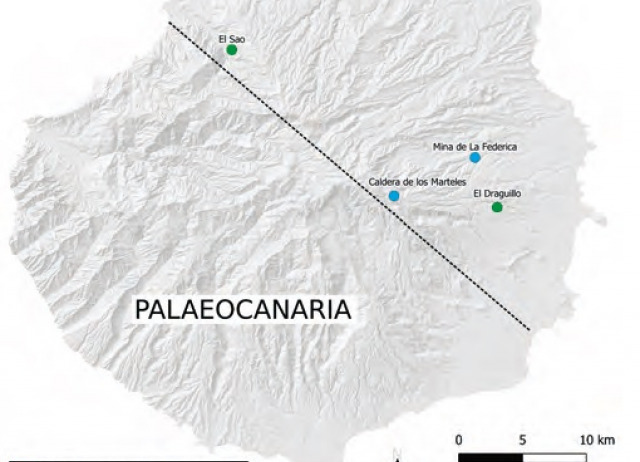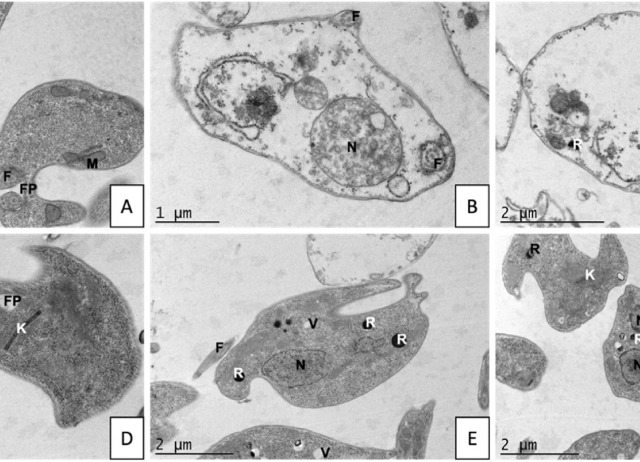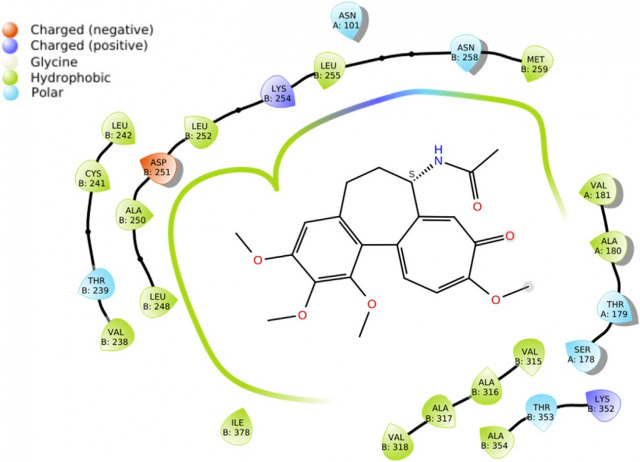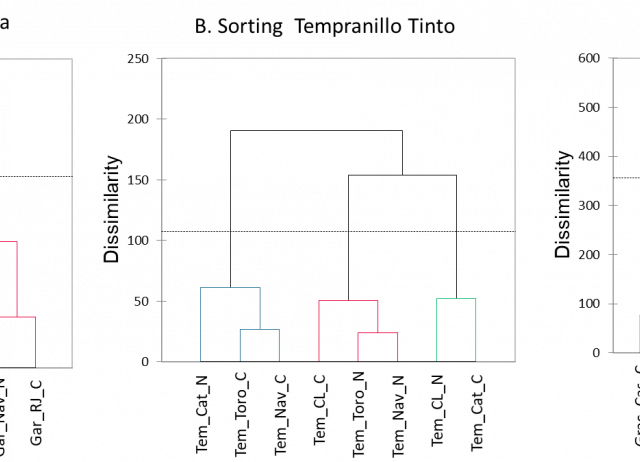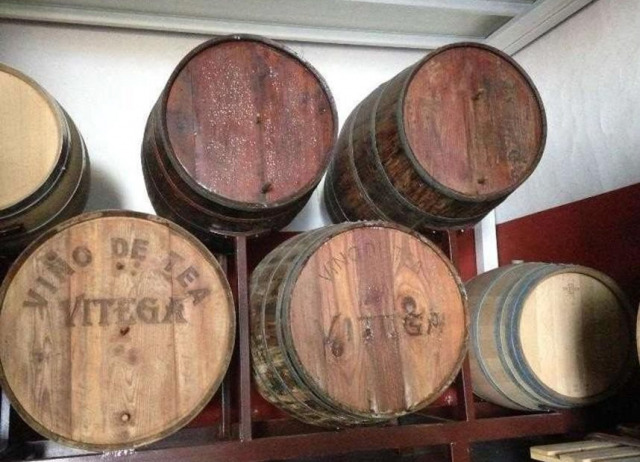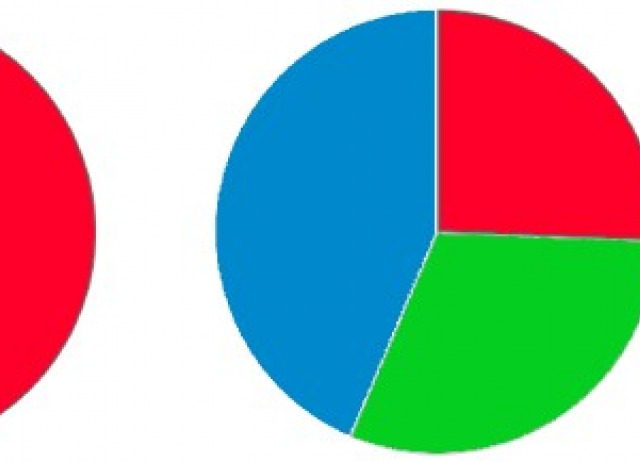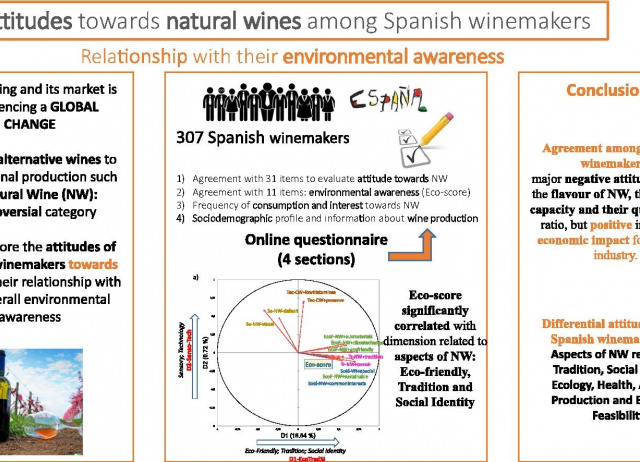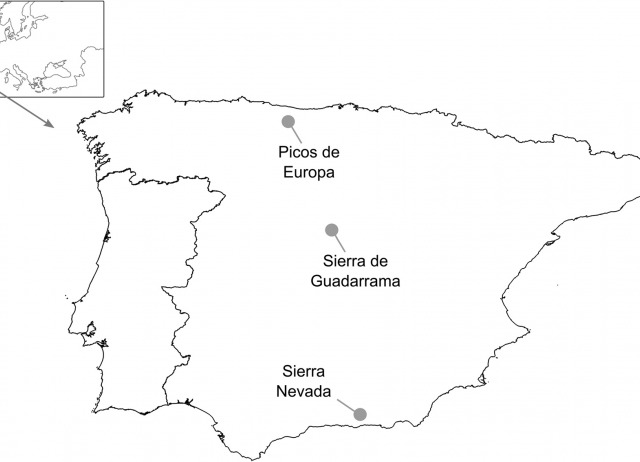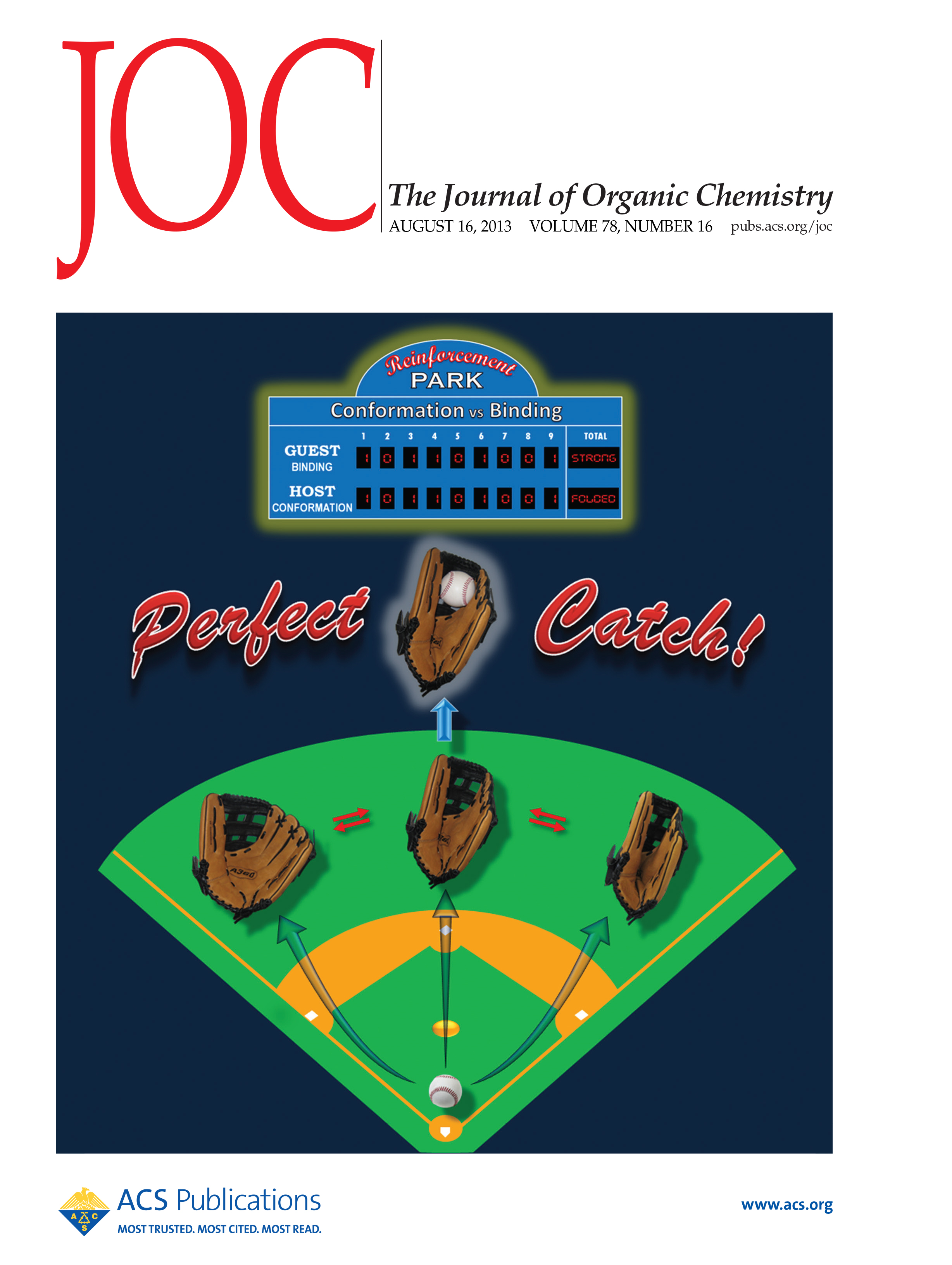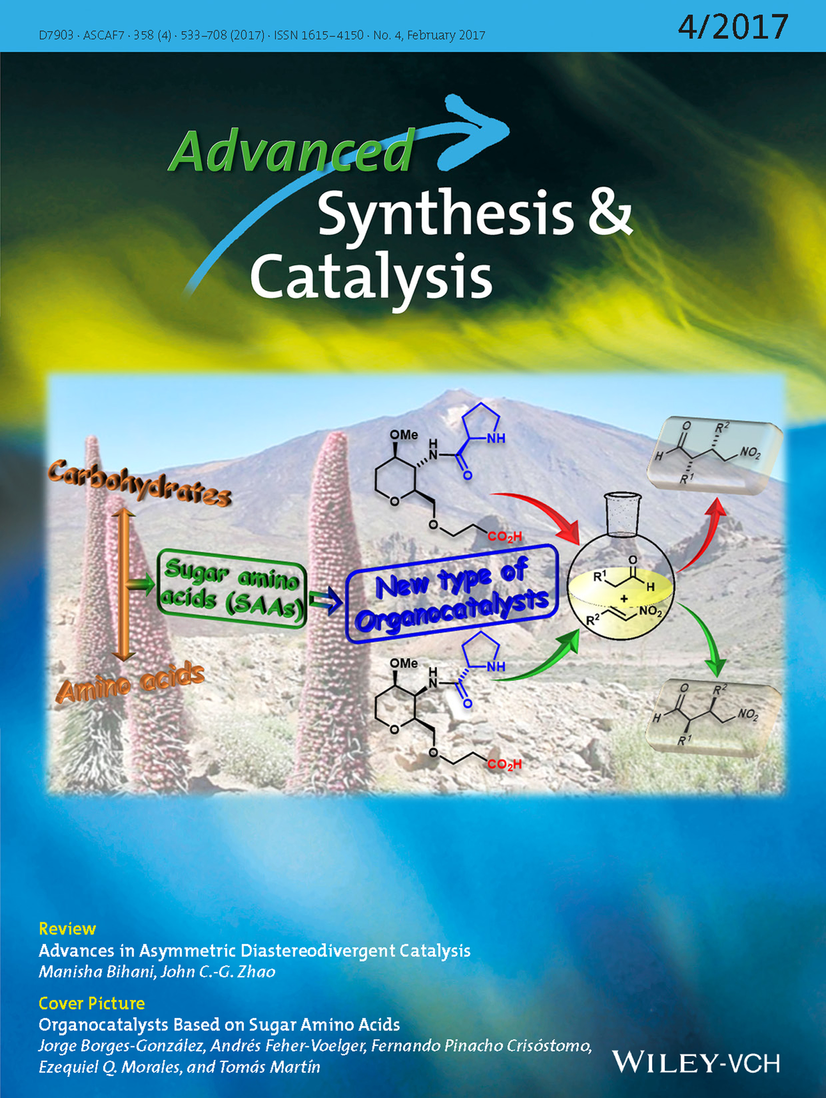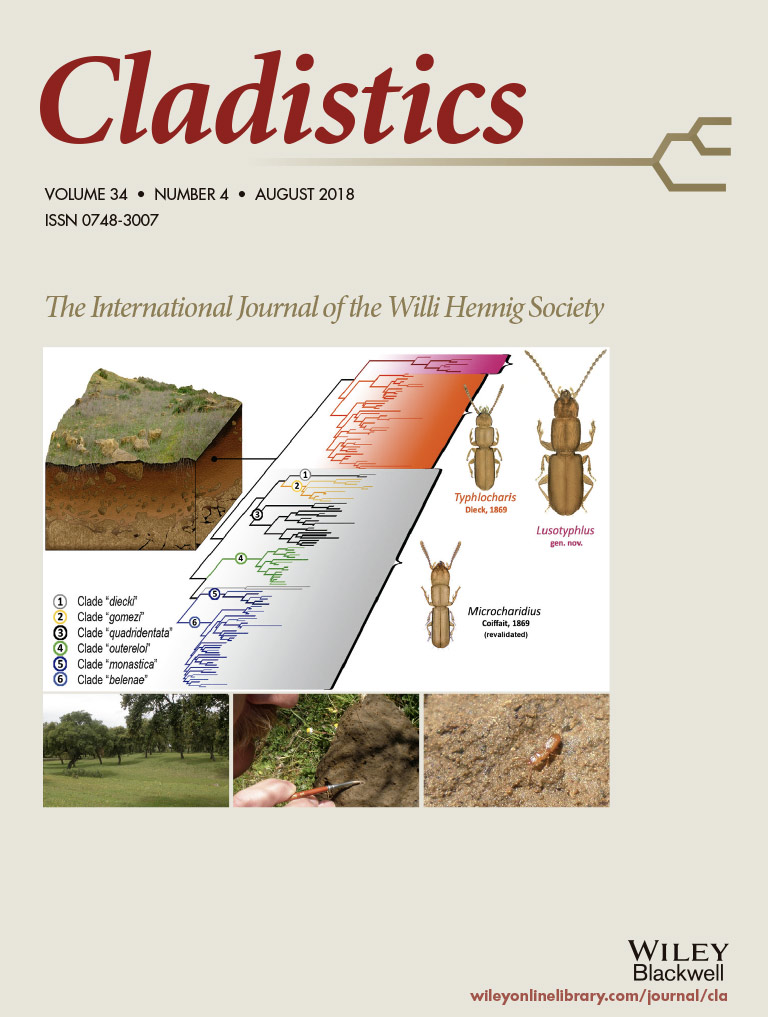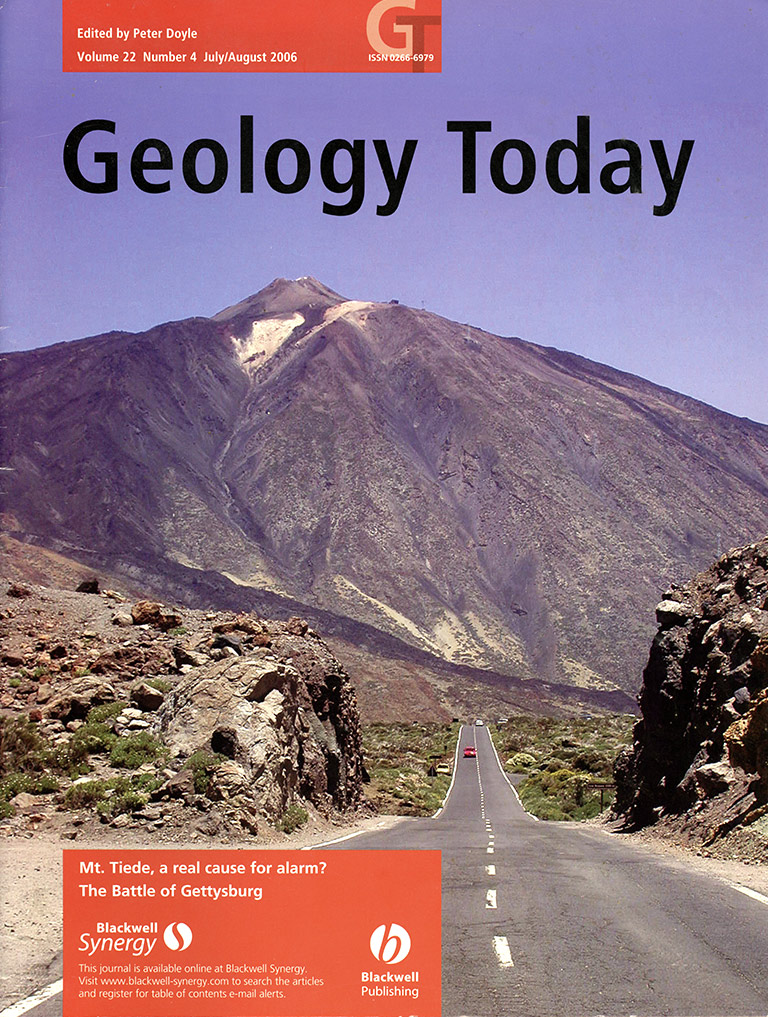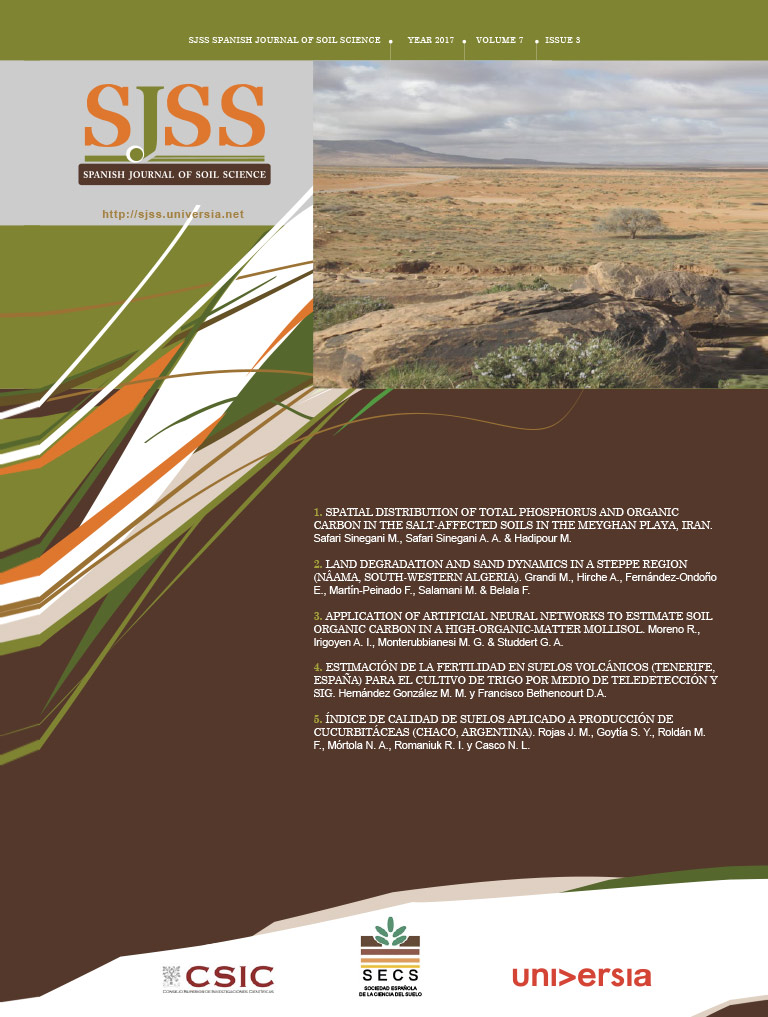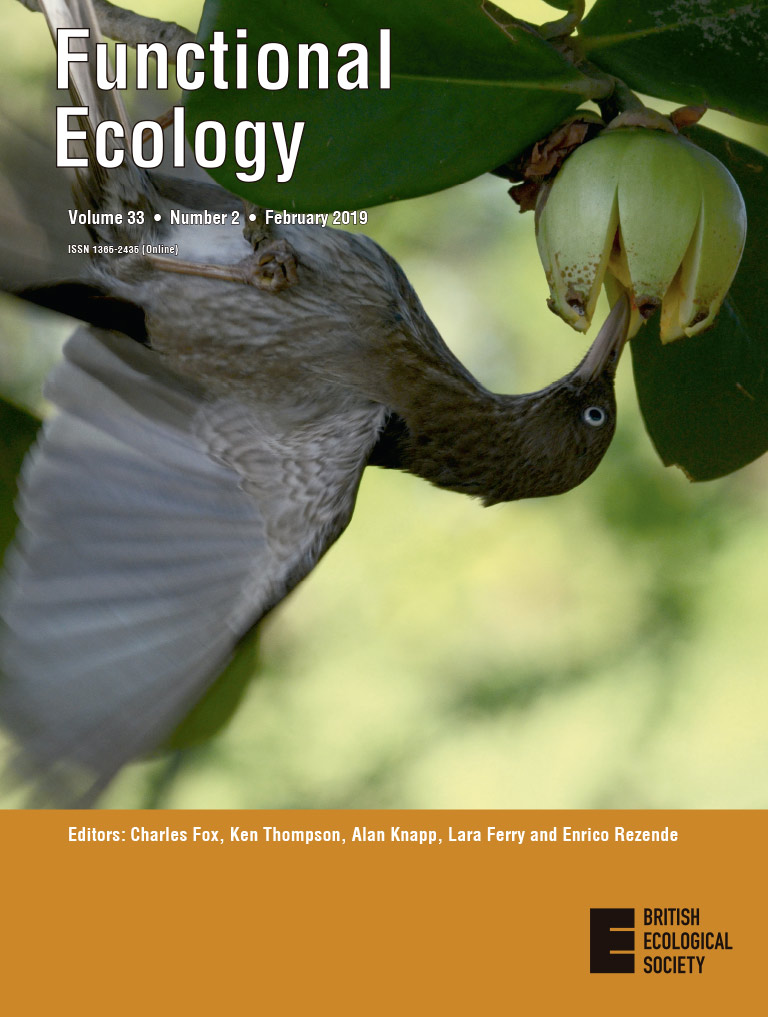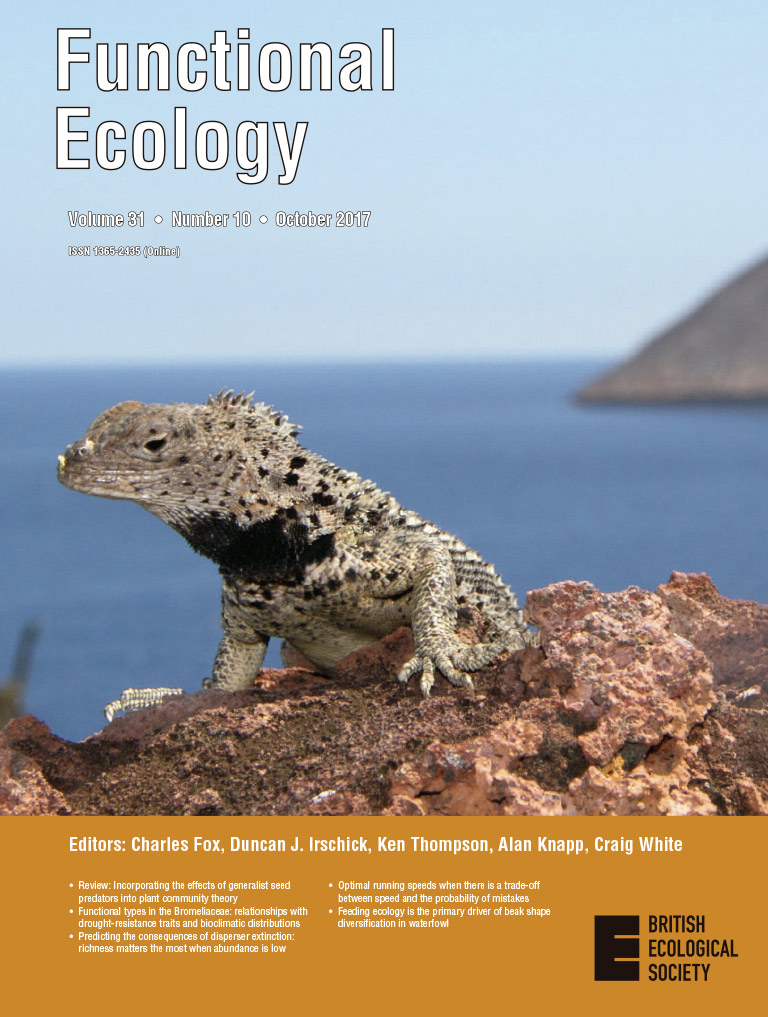Publications
This section includes a list of the latest IPNA scientific articles published in journals included in the Science Citation Index (SCI).
In DIGITAL.CSIC, institutional repository of the CSIC, you can find the complete list of scientific articles since 1962, as well as other collections of interest such as congresses, theses, books, informative material, etc. of the centre. The aim of DIGITAL.CSIC is to organize, preserve and disseminate in open access the results of our research.
In the institutional repository of the CSIC, you can find the complete list of scientific articles, as well as other collections of interest such as congresses, theses, books, informative material, etc.
Analysis of the IPNA 2014-2019 Scientific Production: bibliometric analysis from data collected in Scopus and Web of Science.
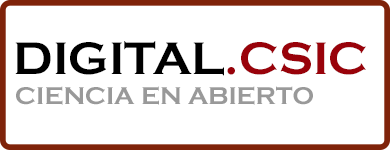
A new eyeless Poecilochroa Westring, 1874 (Araneae: Gnaphosidae) from Gran Canaria, Spain
The mesovoid shallow substratum (MSS) of Gran Canaria is known to harbour a rich and diverse underground fauna. Since the 2000s surveys have been intensified in this island and the number of species associated with caves and MSS has steadily increased, now exceeding fifty species. In this study we describe another MSS species from Gran Canaria which is also the first eyeless member of the spider family Gnaphosidae from the Canary Islands. The new species is only tentatively placed in Poecilochroa Westring, 1874 and is named P. exoculata sp. nov.
Lissner, Jørgen; Suárez, Daniel; López, Heriberto.
Acrylonitrile derivatives: In vitro activity and mechanism of cell death induction against Trypanosoma cruzi and Leishmania amazonensis
Leishmaniasis and Chagas disease are parasitic infections that affect millions of people worldwide, producing thousands of deaths per year. The current treatments against these pathologies are not totally effective and produce some side effects in the patients. Acrylonitrile derivatives are a group of compounds that have shown activity against these two diseases. In this work, four novels synthetic acrylonitriles were evaluated against the intracellular form and extracellular forms of L. amazonensis and T. cruzi. The compounds 2 and 3 demonstrate to have good selectivity indexes against both parasites, specifically the compound 3 against the amastigote form (SI = 6 against L. amazonensis and SI = 7.4 against T. cruzi). In addition, the parasites treated with these two compounds demonstrate to produce a programmed cell death, since they were positive for the events studied related to this type of death, including chromatin condensation, accumulation of reactive oxygen species and alteration of the mitochondrial membrane potential. In conclusion, this work confirms that acrylonitriles is a source of possible new compounds against kinetoplastids, however, more studies are needed to corroborate this activity.
Bethencourt-Estrella, Carlos J.; Delgado-Hernández, Samuel; López-Arencibia, Atteneri; San Nicolás-Hernández, Desirée; Salazar-Villatoro, Lizbeth; Omaña-Molina, Maritza; Tejedor, David; García-Tellado, Fernando; Lorenzo-Morales, Jacob; Piñero, José E.
Synthesis, biological and computational evaluation of novel cyanomethyl vinyl ether derivatives
This work explores the biological evaluation of novel cyanomethyl vinyl ether derivatives as antiproliferative agents. Tubulin, crucial to microtubule structure and function, is a target for cancer therapies. In vitro cytotoxicity assessments revealed significant activity in SKOV3 ovarian carcinoma cells and A549 lung carcinoma cells. Structure-Activity Relationship (SAR) analysis indicated that the E isomer and specific substitutions influenced the biological activity. Computational assays predicted favorable ADME properties, highlighting potential as anticancerous agents. Molecular docking studies demonstrated that compound 12E, with the E geometry of the double bond and fused polyaromatic rings such as phenanthrene, has robust interaction with tubulin, suggesting enhanced stability due to diverse amino acid interactions. Comparative spatial distributions with colchicine further indicated potential mechanistic similarities.
Martín-Encinas, Endika; Fuertes, María; Delgado-Hernández, Samuel; García-Tellado, Fernando; Tejedor, David; Alonso, Concepción.
Sensory attributes and quality perception of red natural wines: a comparative study in Spain and France
Although the definition of natural wine remains contested and still lacks official recognition, it can be broadly described as a wine made with organic or biodynamic grapes without oenological additives in the cellar and minimal intervention in all winemaking stages. Despite growing interest in natural wines, uncertainty prevails about their sensory and quality attributes among both consumers and experts. In light of this research gap, this study aims to determine, first, if there are specific sensory dimensions allowing to differentiate natural wine as a wine category from conventional wines; second, if this sensory dimension affects the perception of the quality; and third, to characterise the physicochemical differences in terms of basic oenological parameters between natural wines and their conventional counterparts. To do so, 24 red wines (12 self-defined as natural and 12 conventional wines) were sensory and chemically characterised. The sensory evaluation was first carried out by winemakers from Spain. It consisted of a descriptive task (labelled sorting task) followed by a quality evaluation under two conditions: with and without information regarding the production method. A second panel of French experts carried out the same quality assessment, also with and without information. The aim was to find out whether expectations existed linked to each type of wine and to explore potential cross-cultural effects. The results of the labelled sorting task showed that natural wines tended to be different from conventional wines, but the difference was not clear-cut. However, natural wines were perceived to be of lower quality than their conventional counterparts, both with and without the information provided, regardless of the origin of winemakers. Results of the chemical analysis showed that natural wines presented higher values for volatile and total acidity and turbidity, while they had lower values for total and free sulphur. The study points to the existence of sensory dimensions with an impact on overall quality associated with the production method.
Ballester, Jordi; Belascoin, Mirian; Gonzalez-Hernandez, Marivel; Parga-Dans, Eva; Alonso-González, Pablo; Sáenz-Navajas, María-Pilar.
Antioxidant Metabolism Pathways in Vitamins, Polyphenols, and Selenium: Parallels and Divergences
Free radicals (FRs) are unstable molecules that cause reactive stress (RS), an imbalance between reactive oxygen and nitrogen species in the body and its ability to neutralize them. These species are generated by both internal and external factors and can damage cellular lipids, proteins, and DNA. Antioxidants prevent or slow down the oxidation process by interrupting the transfer of electrons between substances and reactive agents. This is particularly important at the cellular level because oxidation reactions lead to the formation of FR and contribute to various diseases. As we age, RS accumulates and leads to organ dysfunction and age-related disorders. Polyphenols; vitamins A, C, and E; and selenoproteins possess antioxidant properties and may have a role in preventing and treating certain human diseases associated with RS. In this review, we explore the current evidence on the potential benefits of dietary supplementation and investigate the intricate connection between SIRT1, a crucial regulator of aging and longevity; the transcription factor NRF2; and polyphenols, vitamins, and selenium. Finally, we discuss the positive effects of antioxidant molecules, such as reducing RS, and their potential in slowing down several diseases.
Curieses Andrés, Celia María; Pérez de Lastra, José Manuel; Andrés Juan, Celia; Plou Gasca, Francisco José; Pérez-Lebeña, Eduardo.
El vino de tea de La Palma: Un patrimonio cultural alimentario
El vino de tea, como parte del patrimonio y la cultura inmaterial de la isla de La Palma, constituye un fenómeno de la tradición vitivinícola insular único en el mundo. Esto se debe no solo a la singularidad de su elaboración y consumo, sino que este producto también presenta una composición, unas características organolépticas singulares. Por ello, el presente artículo aúna los diferentes procesos de investigación y los resultados alcanzados y analizados en las diferentes investigaciones realizadas en el marco de proyectos interdisciplinares enmarcados en temáticas variadas. Se emplearon varias técnicas, desde las entrevistas semiestructuradas hasta el análisis de compuestos volátiles. Los resultados muestran que la singularidad de la elaboración de este vino goza de siglos de tradición en el noroeste palmero. Al mismo tiempo que el vino de tea como producto vitivinícola posee una serie de compuestos volátiles específicos conferidos por la maceración en madera de tea.
Arocha Alonso, Francisco Nauzet; Parga-Dans, Eva ; Alonso-González, Pablo; Cumplido Mancera, Luis Francisco.
Foliar treatment with MSB (menadione sodium bisulphite) to increase artemisinin content in Artemisia annua plants
Artemisinin is a sesquiterpene lactone endoperoxide, recognized for its application as a treatment for malaria. Besides, it has activity against several types of cancers, as well as anti-viral and anti-inflammatory properties. The chemical synthesis of artemisinin is quite complex and economically unfeasible. Hence, artemisinin is typically obtained from Artemisia annua plants in low quantities in relation to the biomass. A strategy to increase the biosynthesis of secondary metabolites would be the application of elicitors. In this work, the effect of treating A. annua plants with menadione sodium bisulphite (MSB) is studied. An initial dose-optimization was conducted by treating the plants with different MBS concentrations (0, 0.2, 0.8, 1, 2, 3 and 4 mM) and artemisinin was quantified 48 h after treatment. The highest artemisinin content (3.71 mg artemisinin g−1 DW) was obtained with 1 mM of MSB. Then, harvesting time was optimised (24, 48 and 72 h after treatment application) with 1 mM of MSB. The largest increase in artemisinin content was observed at 48 h with an increment of 62.37 % over the control. The treatment increased H2O2 content, as well as the activity of superoxide dismutase (SOD) and ascorbate peroxidase (APX). Besides, MSB up-regulated HMGR (the gene for 3-hydroxy-3-methylglutaryl-CoA reductase) and DXS (the gene for 1-deoxy-D-xylulose-5-phosphate synthase) 24 h after treatment. Both genes are involved in the MVA (mevalonate) and MEP (2C-methylerythritol 4-phosphate) pathways, respectively. These pathways represent the initiation of artemisinin biosynthesis. Thus, MSB application and the consequent up-regulation of early biosynthetic pathway genes along with the triggered oxidative stress may have been contributed to the observed increase in artemisinin production.
García-García, Ana L.; Rodríguez-Ramos, Ruth; Borges, Andrés A.; Boto, Alicia; Jiménez-Arias, David.
Comparative analyses of pesticide residues, elemental composition and mycotoxin levels in Spanish traditional and novel ciders
The apple cultivar, known for its adaptability and diverse varieties, has been extensively utilized for cider production, particularly in climatically suitable regions. Cider, an age-old alcoholic beverage derived from fermenting apple juice, is gaining popularity, especially among younger generations. Despite this trend, comprehensive knowledge regarding the toxicological profile of ciders remains limited, leaving room for potential chemical contaminants from raw ingredients or production methods. To address this gap, we conducted an unprecedented study analyzing sixty-eight cider samples from the Spanish market, encompassing both traditional ciders and newly developed apple-based flavored drinks referred to as “ciders.” Our investigation focused on pesticide residues, elemental profiles, and mycotoxin residues. In a groundbreaking approach, our study integrated the analysis of 225 pesticide residues, 50 Persistent Organic Pollutants (POPs), 11 mycotoxins (AFB1, AFB2, AFG1, AFG2, DON, FB1, FB2, H-2, HT-2, OTA, PAT, and ZEN), and a total of 50 elements. Pesticide residues were identified using GCMSMS and LCMSMS, elemental composition determined via ICPMS, and mycotoxins analyzed using LCMSMS. The significance of our research lies in addressing the dearth of toxicological analyses of ciders, despite their burgeoning global consumption and production. For pesticide residues and elemental composition, our results underwent statistical processing, revealing distinct differences between the elemental profiles of traditional ciders and “ciders.” Additionally, disparities were observed between cider and other low-alcohol fermented beverages like wines and beers. Concentrations of most pesticide residues and elements in the cider samples were deemed non-toxic, falling below allowable limits established by international organizations for other beverages such as water or wine. However, certain elements, notably Br and Pb in traditional ciders, raised potential concerns. Our findings underscore the necessity of establishing regulatory limits for pesticide residues, potentially hazardous elements, and mycotoxins in cider, a regulatory framework currently lacking on a global scale.
Alonso-González, Pablo; Parga-Dans, Eva; de las Heras Tranche, Iván; Acosta-Dacal, Andrea Carolina; Macías Montes, Ana; Zumbado Peña, Manuel; Pérez Luzardo, Octavio.
Attitudes towards natural wines among Spanish winemakers: relationship with environmental awareness
There is an important movement in the wine industry towards the production of alternative and more sustainable wines. Natural wine (NW) is a controversial category of alternative wines, which needs to be further explored. Given the role of technical experts as opinion leaders, the present work aims to explore the attitudes of Spanish winemakers towards NW and their relationship with their overall environmental awareness. Therefore, 307 Spanish winemakers completed a questionnaire to evaluate: 1) their attitudes towards NW by scoring their agreement with 31 statements, 2) their ecological awareness by evaluating 11 items, 3) their frequency of consumption and interest towards NW, and 4) their sociodemographic profile and general information about wine production. PCA with varimax rotation calculated on 28 of the 31 statements related to their attitudes showed six independent dimensions. Further hierarchical cluster analysis calculated with the six dimensions showed five clusters of wine experts with different attitudes towards NW. Results show that there is a major negative attitude towards the flavour of NW, their ageing capacity and their quality-price ratio, but a positive one in terms of economic impact for the wine industry. Aspects related to the role of NW in tradition, social identity, ecology, health, artisanal production and economic feasibility mark differential attitudes. Interestingly, the dimension related to winemakerś attitude towards tradition, social identity, and ecology of NW was positively correlated with their overall ecological awareness and thus their life style. This paper sheds light in the understanding of the behaviour of Spanish winemakers regarding ecological transition and provides tools for policymaking regarding NW certification.
Sáenz-Navajas, María-Pilar; Terroba, Estela; Parga-Dans, Eva; Alonso-González, Pablo; Fernández-Zurbano, Purificación; Valentin, Dominique.
Addition of nocturnal pollinators modifies the structure of pollination networks
Although the ecological network approach has substantially contributed to the study of plant-pollinator interactions, current understanding of their functional structure is biased towards diurnal pollinators. Nocturnal pollinators have been systematically ignored despite the publication of several studies that have tried to alleviate this diurnal bias. Here, we explored whether adding this neglected group of pollinators had a relevant effect on the overall architecture of three high mountain plant-pollinator networks. Including nocturnal moth pollinators modified network properties by decreasing total connectivity, connectance, nestedness and robustness to plant extinction; and increasing web asymmetry and modularity. Nocturnal moths were not preferentially connected to the most linked plants of the networks, and they were grouped into a specific “night” module in only one of the three networks. Our results indicate that ignoring the nocturnal component of plant-pollinator networks may cause changes in network properties different from those expected from random undersampling of diurnal pollinators. Consequently, the neglect of nocturnal interactions may provide a distorted view of the structure of plant-pollinator networks with relevant implications for conservation assessments.
García, Yedra; Giménez-Benavides, Luis; Iriondo, José M.; Lara-Romero, Carlos; Méndez, Marcos; Morente-López, Javier; Santamaría, Silvia.
